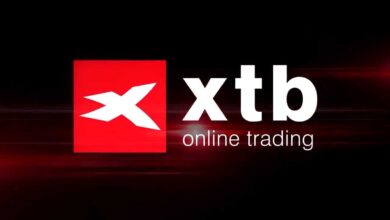Top Strategies for Profitable Crypto Trading

Top Strategies for Profitable Crypto Trading
Introduction
Crypto trading can be an exciting yet challenging endeavor for both beginner and experienced investors alike. With over 18,000 different cryptocurrencies in circulation today worth over $1 trillion, the crypto markets present a world of potential profits for savvy traders.[1] However, the extreme volatility of crypto assets also comes with substantial risk. While some traders have earned life-changing wealth from crypto trading, others have lost their entire portfolios on high-risk bets.
Fortunately, crypto trading doesn’t have to be a gamble. With the right strategies and mindset, traders can consistently profit from crypto markets while minimizing their risk exposure. This guide outlines proven techniques used by successful crypto traders to generate consistent returns. Whether you’re just starting out or looking to improve your trading skills, these top crypto trading tips will help you navigate the fast-moving crypto markets and position you for trading success.
Have a Trading Plan
Having a well-defined trading plan is essential for profitable crypto trading. A solid plan helps you make logical decisions amidst the volatility and emotion of the markets. Your plan should establish your goals, timeframes, risk tolerance, and rules for buying, selling and managing trades.
- Set profit targets. Have specific profit goals for each trade and overall. This can be a percentage gain or dollar amount. Setting profit targets helps you avoid overtrading and removes emotion from selling decisions.
- Use stop losses. Determine stop loss levels for each trade, such as if the price drops X%, you will exit. This controls downside risk on any given trade. Stops take the emotion out of sell decisions.
- Define your risk tolerance. Know how much you are willing to risk on each trade and in total. Only risk capital you can afford to lose. Factor this into position sizing for each trade.
- Follow your plan. Resist the urge to deviate from your trading plan based on emotions like fear or greed. Follow your rules for entering and exiting trades. This will improve consistency.
- Review and update. Reevaluate your plan periodically and after major market events. Make adjustments to goals, risk tolerance and rules based on results and changing market conditions. A trading plan is not static.
Sticking to a strategic trading plan can help work through the ups and downs of crypto investing. It provides structure and guidelines for making objective decisions.
Use Dollar Cost Averaging
Dollar cost averaging is a strategy where you invest a fixed dollar amount into a cryptocurrency or crypto portfolio on a regular schedule, regardless of the asset’s price. For example, you could invest $100 into Bitcoin every week.
The main benefit of dollar cost averaging is that it removes emotion from the investing process. By committing to a set investment schedule, you avoid the temptation to time the market. When prices are low, your fixed dollar investment will purchase more crypto. When prices are high, you’ll receive less crypto for the same dollar investment. But over the long run, dollar cost averaging helps smooth out volatility.
Dollar cost averaging takes advantage of market fluctuations by automatically buying more crypto when prices drop. Over time, this can lower your average cost per coin.
Many exchanges and services now offer automated dollar cost averaging options. This allows you to set up recurring buys on a daily, weekly or monthly basis. Removing the manual work makes dollar cost averaging an easy low-maintenance strategy.
The key is consistency and discipline. Dollar cost averaging works best when maintained over months or years. Don’t pause investing if the market dips. Stick to your schedule through ups and downs. With patience, dollar cost averaging can yield profitable results.
Don’t Try to Time the Market
Attempting to time the ups and downs of the crypto market is extremely difficult, if not impossible. Prices can fluctuate wildly day-to-day and even hour-to-hour. There are so many factors that can influence prices – news events, regulations, whale investors, and more.
While you may get lucky on timing occasionally, consistently predicting swings is next to impossible. Even professional traders have trouble timing tops and bottoms consistently.
Rather than trying to time the market, use a consistent, reasoned approach. Dollar cost average on a schedule into projects you believe in long-term. Don’t get distracted attempting to chase pumps or perfectly sell the top. Time in the market beats trying to time the market.
Patience and discipline will serve you better than trying to predict major price swings. The long-term growth story for crypto remains intact despite volatility. Stay focused on steadily accumulating quality assets instead of timing the markets.
Manage Your Emotions
Emotions can easily derail your trading strategy if you let them. It’s important to trade with a level head and stick to your plan.
One of the biggest pitfalls for crypto traders is FOMO buying. When prices start rapidly rising, it can be tempting to jump in out of fear of missing out on gains. However, buying at the top after a big pump is a recipe for getting stuck holding a bag when prices correct. Stick to dollar cost averaging rather than chasing pumps.
On the flip side, major price drops can cause panic selling. When the market crashes, it may seem like it will never recover. But cryptocurrencies are volatile, and prices generally bounce back. Avoid panic selling at the bottom by zooming out, sticking to fundamentals, and remembering crypto’s long-term potential.
Patience and discipline are key. Don’t let emotions hijack your trades. Stick to your trading plan and investment thesis even during periods of extreme volatility. With time, keeping emotions in check will become easier.
Analyze the Fundamentals
In crypto trading, it’s important to analyze the fundamentals of a project before investing. This involves researching what the project aims to accomplish, its technology, team, and development roadmap.
Look into the key features of the project and how it aims to solve problems or add value in its domain. For example, if it’s a payments coin like Bitcoin, analyze how it compares to traditional payment systems in aspects like speed, fees, and decentralization.
Evaluate the capabilities of the core development team and their track record of delivering on promises. The team’s technical expertise and alignment with the project’s goals are key. Look for developers committed long-term with proven abilities.
Stay updated on project news and developments by following official social media accounts, blogs, and announcements. Major exchanges and partnerships, product launches, and other milestones indicate real progress.
Roadmaps that lay out long-term plans are especially insightful. Active GitHub repositories with steady code commits also showcase ongoing development. Ultimately, projects with transparency and regular technical advancements tend to perform better long-term.
By thoroughly analyzing crypto fundamentals, you can make informed investment decisions and avoid short-term hype-driven gambles. Focus your trading on coins with real technology, active development, and long-term potential.
Use Technical Analysis
Technical analysis involves analyzing market activity, including price movements and trading volume, to identify trends and make more informed trading decisions. Here are some tips for using technical analysis in crypto trading:
- Look for patterns – Watch for chart patterns like head and shoulders, cup and handles, wedges, triangles etc. These patterns can indicate potential breakouts or reversals.
- Use indicators – Indicators like moving averages, MACD, RSI etc can identify overbought/oversold conditions and potential trend changes. Combine different indicators for confluence.
- Spot support and resistance – Look for price levels where uptrends stall and downtrends reverse. These act as support and resistance zones.
- Analyze volume – Volume indicates market interest. Spikes in volume signal major movements. Low volume suggests lack of interest.
- Identify trends – Spot overall market trend, either upward, downward or sideways. Also look for trends within these major trends.
- Watch moving averages – Moving averages smooth out price action and depict trends. 50 & 200-day MAs are widely followed. Crossovers signal trend changes.
- Use candlestick charts – Candlestick patterns like doji, shooting star, hammer etc give insights into market sentiment and potential reversals.
- Backtest strategies – Backtest technical trading systems on historical data to evaluate their profitability before using real capital.
- Automate signals – Use bots or algorithms to automatically execute trades when technical indicators identify buy/sell signals.
Proper application of technical analysis helps traders objectively identify high-probability trading opportunities. It complements fundamental analysis for a complete approach.
Minimize Fees
When trading cryptocurrencies, transaction fees can quickly eat into your profits if you’re not careful. Here are some tips for minimizing fees:
- Choose exchanges carefully. The fees charged by exchanges can vary significantly. Do your research to find exchanges with lower trading, deposit, and withdrawal fees. Avoid exchanges that charge excessive fees.
- Use fee-free funding options when depositing fiat currency. Many exchanges allow fee-free deposits via wire transfer or ACH transfer from your bank account. This avoids deposit fees.
- Withdraw large amounts at once. Most exchanges charge a flat withdrawal fee each time you take money out. You can minimize these fees by withdrawing larger amounts less frequently rather than small amounts regularly.
- Use exchanges with discounts or reduced fees. Some exchanges offer discounted fees or rebates if you reach a certain trading volume per month. Consider consolidating trading to exchanges with lower fees for active traders.
- Trade on the least expensive exchange possible. If an asset is available on multiple exchanges, buy and sell it on the exchange with the lowest fees.
- Store assets in wallets, not exchanges. Leaving cryptocurrency on exchanges means being subject to their withdrawal fees every time you want to move it. Transfer to a secure wallet after buying.
By carefully selecting exchanges and being mindful of fees, crypto traders can save significantly on costs over time. Lower fees mean more profits.
Practice Good Security
Keeping your crypto assets secure should be a top priority. With digital assets, the security responsibilities fall much more heavily on the user compared to traditional finances.
One of the best ways to secure crypto is to use cold storage. This involves keeping the majority of your assets in an offline device, disconnected from the internet. Popular cold storage options include hardware wallets like Trezor and Ledger. The keys remain offline, minimizing exposure to hacking risks.
Strong passwords are also critical for crypto account security. Avoid reusing passwords across accounts. Use randomly generated long passwords, a password manager, and two-factor authentication whenever possible. Write down backup phrases and store them securely offline.
Being diligent about security may seem inconvenient, but it’s essential to protect your hard-earned crypto assets. Thefts and hacks are common in the crypto world. With the right precautions, you can greatly reduce your risks. The peace of mind of knowing your crypto is safe and secure is well worth the extra effort.
Stay Informed
One of the most important things you can do as a crypto trader is to stay informed on the latest news and trends in the market. There are several ways to keep up with the fast-paced world of crypto:
- Follow crypto news sites – There are many news sites, blogs, podcasts and YouTube channels dedicated to crypto news. Some good options are CoinDesk, CryptoSlate, Decrypt, CoinTelegraph and Bankless. Following a mix of these sites will help you stay on top of the latest developments.
- Follow crypto leaders on social media – Leading crypto investors, developers and commentators often share insights and analysis on Twitter. Make a list of influential voices to follow. Some recommendations: @vitalikbuterin, @loomdart, @SatoshiLite, @barrysilbert, @aras_io.
- Read research reports – Many analysts at banks and investment firms publish in-depth crypto research reports. These provide valuable perspectives on valuations, trends and predictions. Kraken, Coinbase and Grayscale often publish insightful reports.
- Join crypto communities – Having discussions with other traders can lead to new ideas. Reddit has active crypto trading communities like /r/CryptoCurrency and /r/BitcoinMarkets. Also consider Discord groups and Telegram channels focused on trading.
- Listen to crypto podcasts – For convenient listening while multi-tasking, subscribe to podcasts like Unchained, Unconfirmed, Bankless and Hash Power. Many provide market insights from top experts.
By making an effort to regularly consume crypto news and analysis, you’ll enhance your understanding of this rapidly changing market. An informed trader has a tremendous advantage over those who ignore what’s happening in the crypto world.
READ MORE : The best ways to earn from Binance trading platforms




